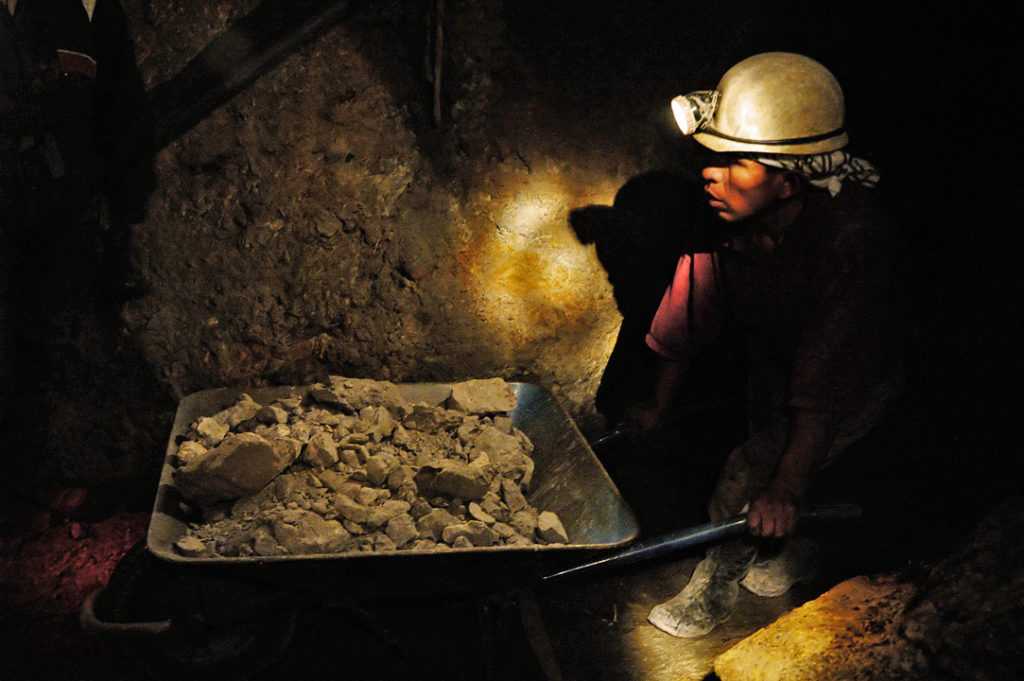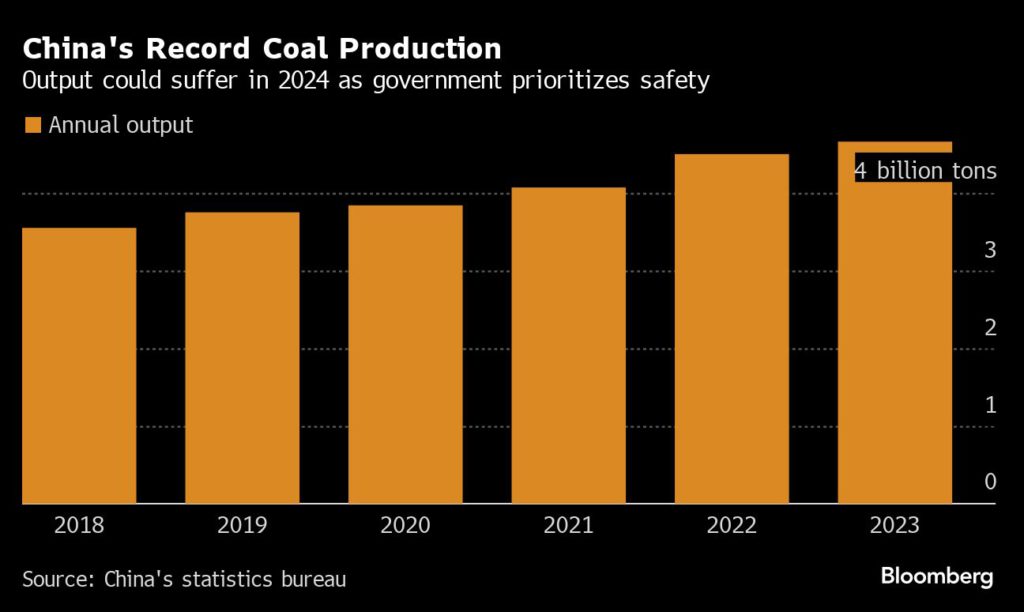
Stricter regulation of Chinese coal mines to reduce fatalities could raise the risk of renewed supply disruptions and higher prices in the world’s biggest market for the fuel.
A string of disasters over the last 12 months, including 53 deaths in a landslide at an open-pit mine in Inner Mongolia, has refocused the authorities on accident prevention. More than 2,000 investigations into mine safety were conducted last year. From May 1, the penalties for breaches will include forced closures and fines of up to 20 million yuan ($2.8 million).
“Stay tuned for potential supply-side disruptions from suppressed production brought on by this policy in the second half of 2024, which would consequently lead to a hike in coal prices,” Dennis Ip, an analyst with Daiwa Capital Markets Hong Kong Ltd., said in a note on Monday.

China’s vast and fragmented coal mining industry is being forced to juggle competing priorities. The government has ordered up record output to meet national energy security needs, only for safety officials to lay the blame for a rise in accidents on high-intensity production that has over-stressed facilities and equipment.
The renewed focus on safety hearkens back to 2021, and the government’s crackdown ahead of the Communist Party’s 100th anniversary. Production curbs that year contributed to a coal shortage that led to nationwide power curtailments. Beijing then responded with a push to boost output and ensure supply, as well adopting less disruptive ways of dealing with incidents.
Two years on, that effort has left China amply supplied with its mainstay fuel. Spot coal prices are 24% below where they were a year ago. Imports have also hit record levels, while a deluge of clean power is expected to reduce demand for thermal power.
That’s bought officials some leeway to relax energy security measures. But the lessons of recent years also show that extreme weather events linked to the climate crisis, or renewed vigor in the economy, could quickly erode China’s buffer and precipitate another crisis around supply.
Comments